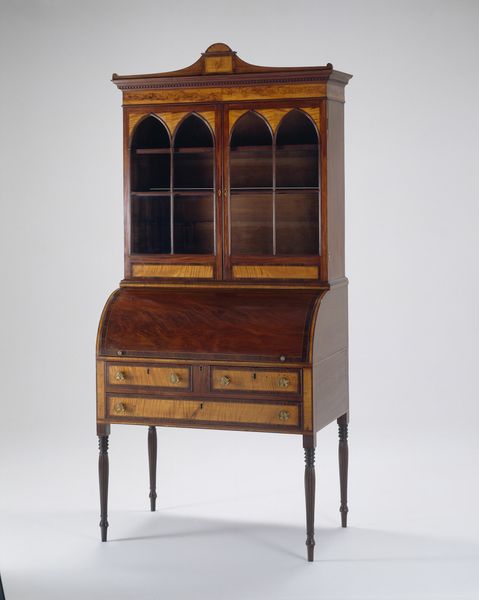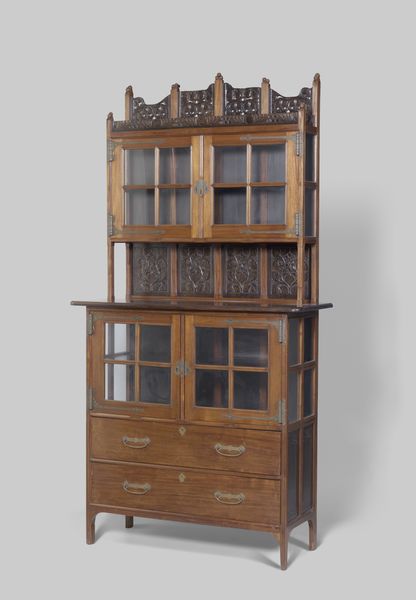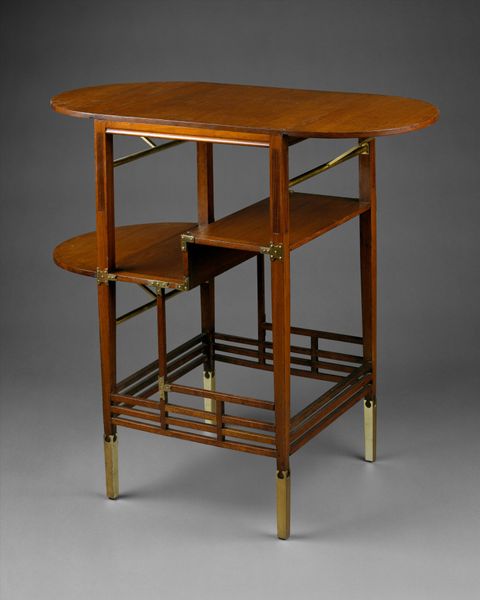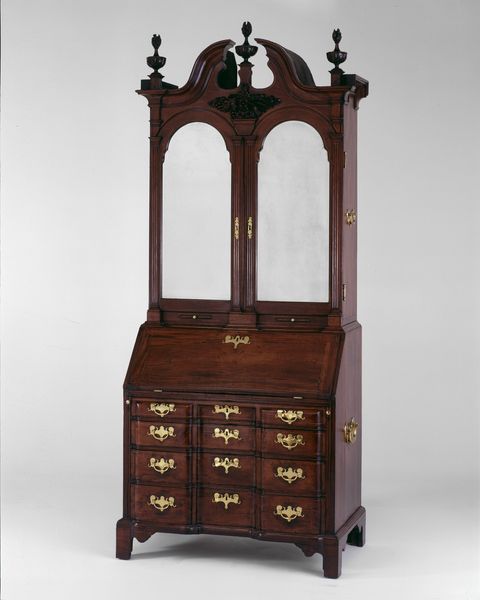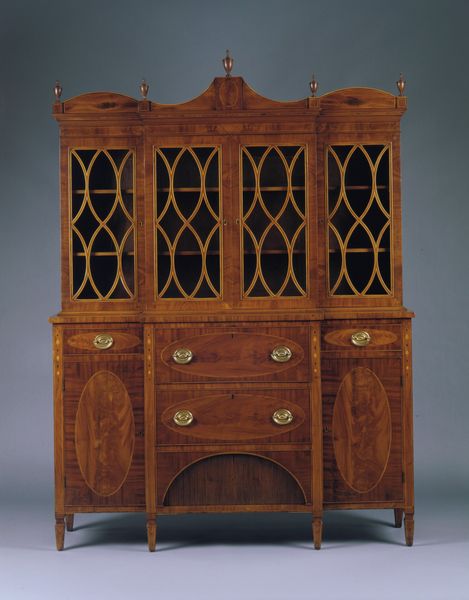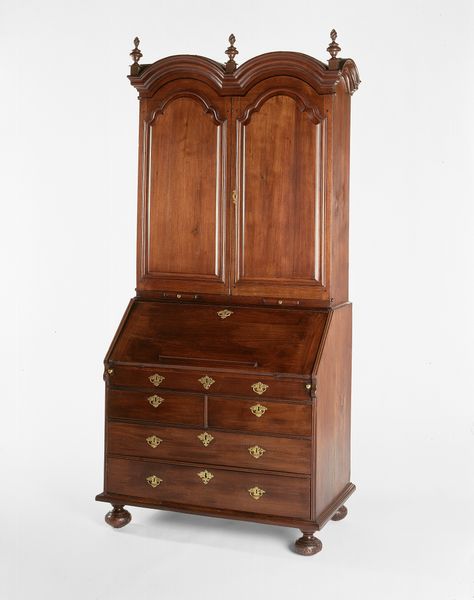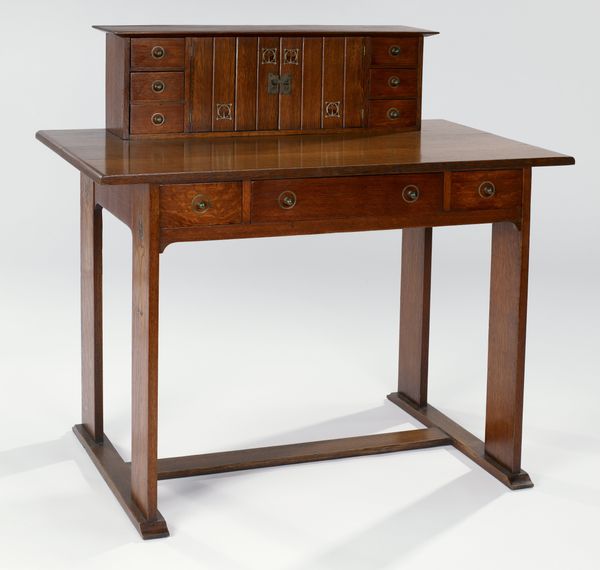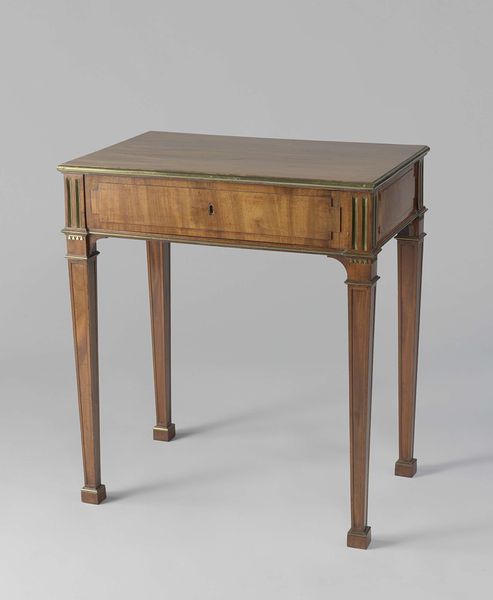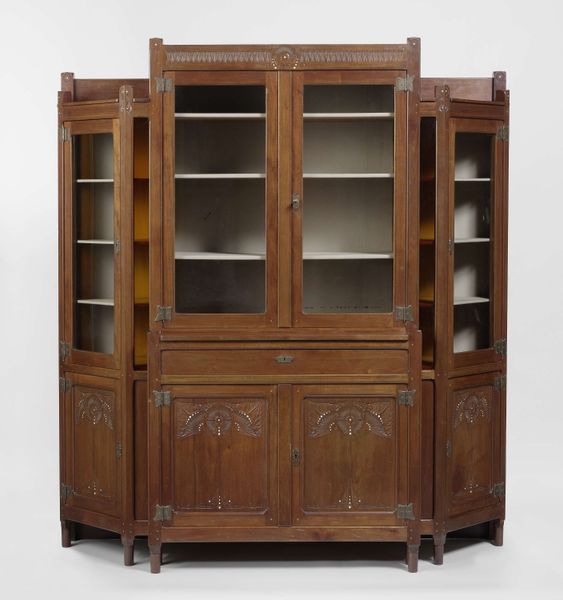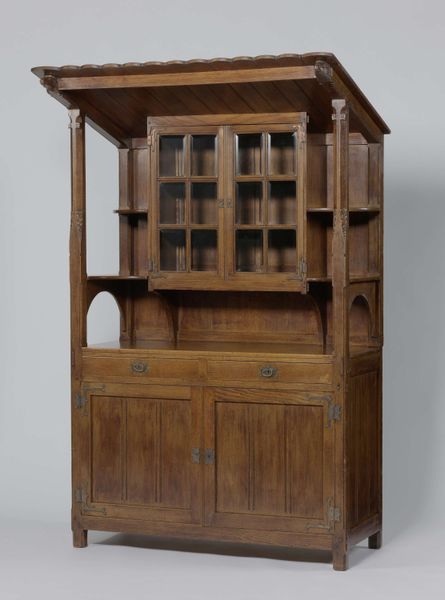
Bonheur du jour met onder- en middenblad en met terugspringend opzetstuk met twee deurtjes. Opengewerkte kroonlijst. Blad van wit marmer.Belijmd met verschillende houtsoorten c. 1785 - 1790
0:00
0:00
Dimensions: height 116.5 cm, width 53.0 cm, depth 32.5 cm, width 50.5 cm, depth 29.0 cm, weight 28 kg
Copyright: Rijks Museum: Open Domain
Editor: So, this is a *Bonheur du jour*, made by Adam Weisweiler around 1785-1790. It’s crafted from various woods, metal, and white marble. The scale of the piece gives a sense of understated luxury. How did furniture pieces like this reflect social trends in that era? Curator: That's a keen observation about its scale! Looking at the late 18th century, pieces like this weren't just furniture, they were statements. Weisweiler crafted this during a time of immense social and political upheaval in France. How do you think a piece like this might have fit into the lives of the elite, particularly in light of the impending revolution? Editor: Maybe it's a display of wealth and refined taste? Perhaps this desk could be a symbol of the aristocratic lifestyle. Was furniture being used for communicating something? Curator: Precisely. The *Bonheur du jour*, meaning "a daytime delight," speaks volumes. Its delicate craftsmanship and expensive materials projected an image of sophistication and leisure. These types of pieces embody the pre-Revolutionary values of elegance, but it’s hard to avoid the underlying tension – the conspicuous consumption displayed against a backdrop of growing social inequality. Editor: So it's both beautiful and potentially controversial! Thinking about it, having such items might influence a lifestyle. The object can be also understood as playing a role in maintaining a societal hierarchy. Curator: Exactly. It reinforces the idea of luxury as a tool to sustain existing social structures. Where do we draw the line between admiration of aesthetic value and being critical of this association with social disparity? Editor: I've certainly learned a great deal today about seeing past beauty to view this desk with an understanding of historical context. Curator: And I found that reflecting on how society shapes our consumption can bring new life and new lessons.
Comments
No comments
Be the first to comment and join the conversation on the ultimate creative platform.
